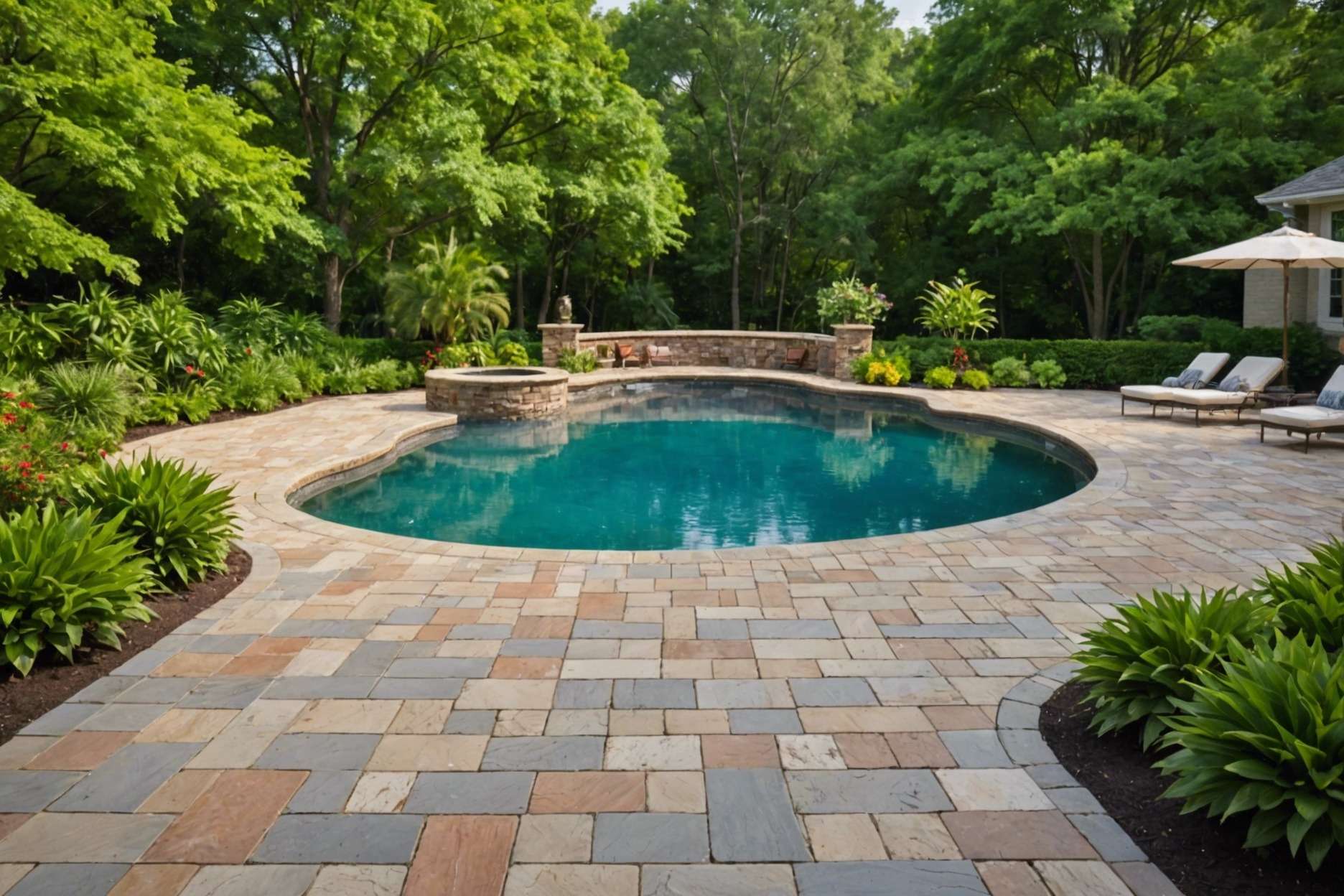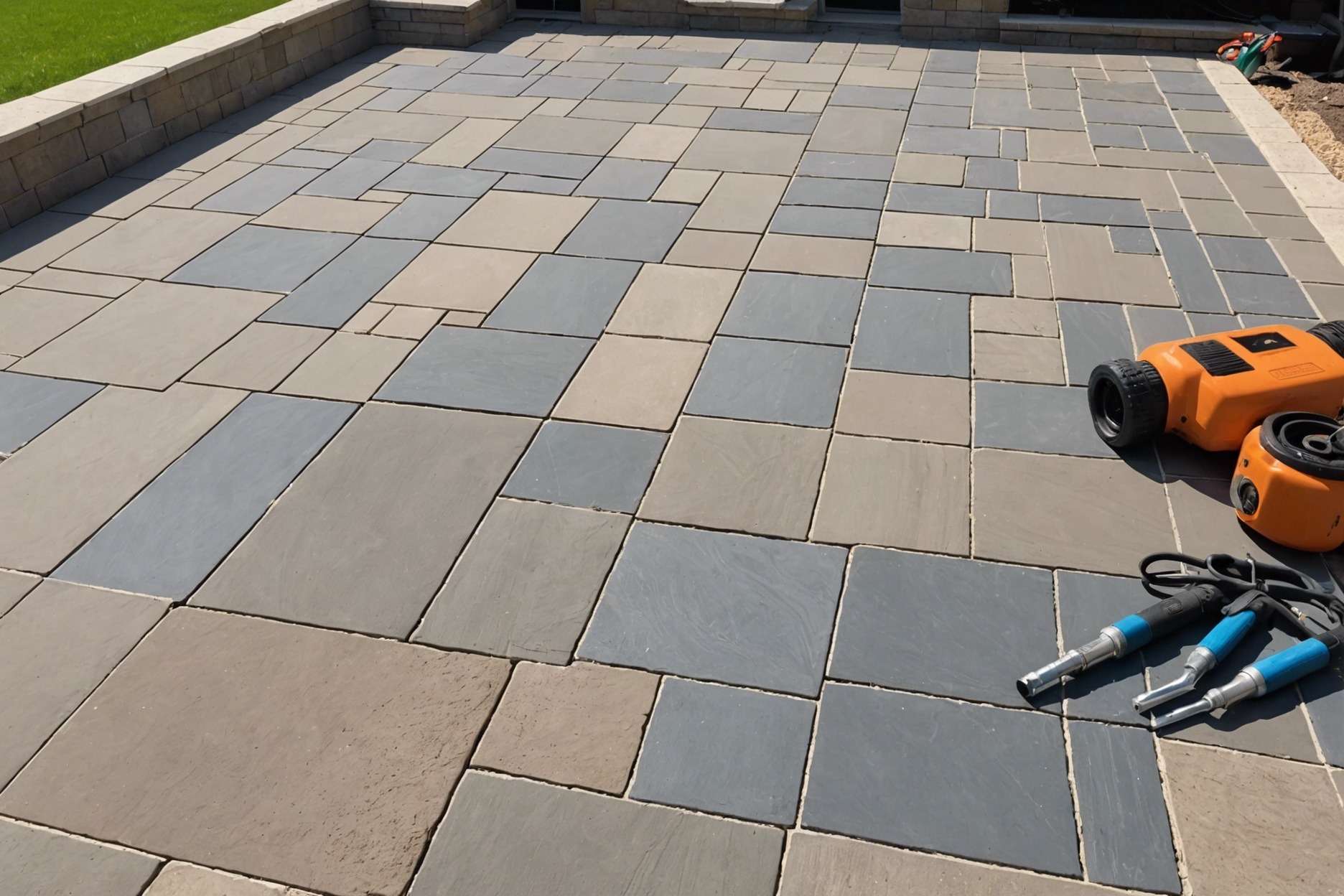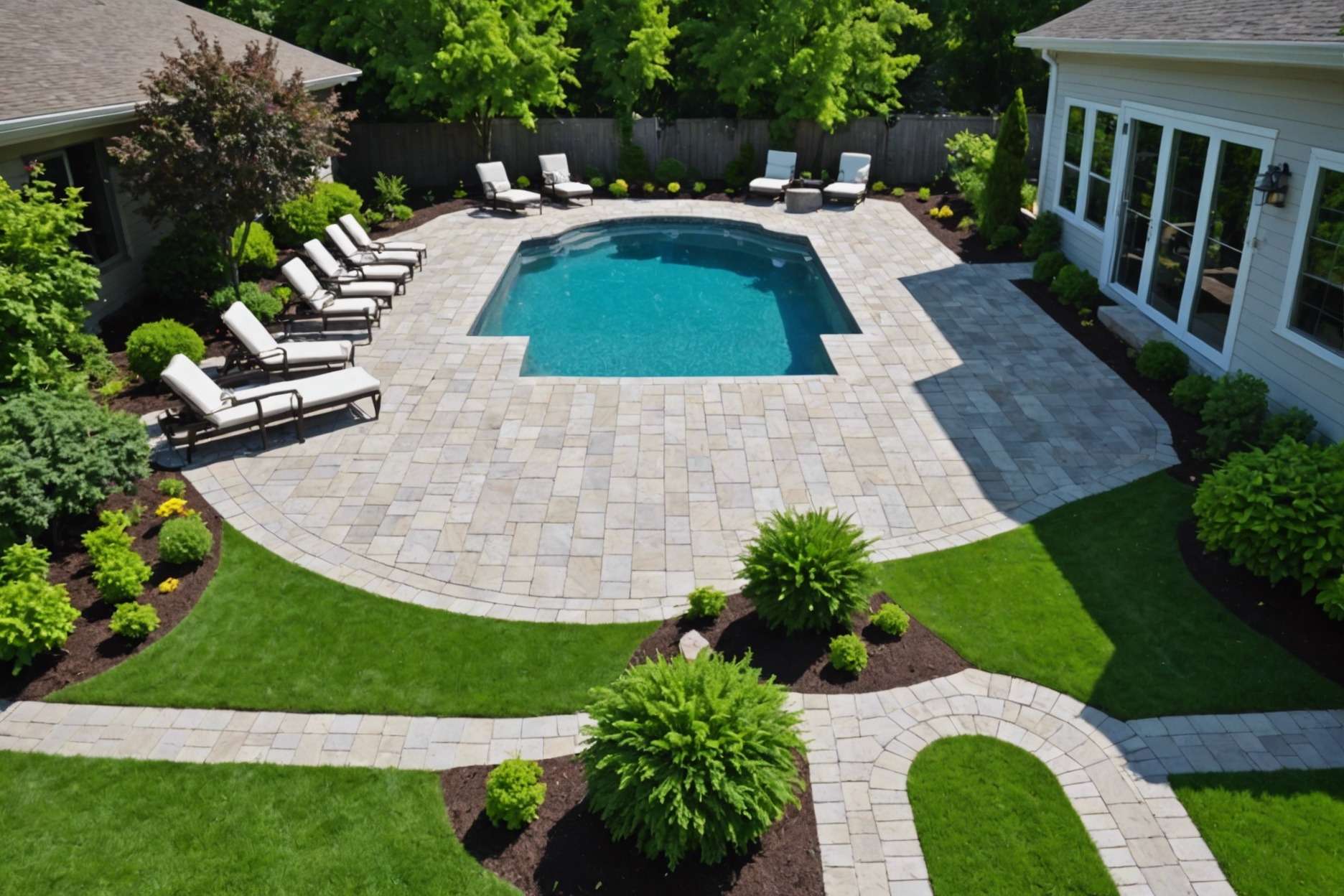
Why Pool Patio Pavers Develop Gaps

Pool patio pavers develop gaps primarily due to substrate movement caused by factors like temperature changes, moisture, and natural ground settling. These movements cause expansion, contraction, and shifting of the substrate, leading to gaps between the individual pavers.
Introduction to Pool Patio Pavers and Their Installation
Pool patio pavers are a popular choice for enhancing pool decks, offering both aesthetic appeal and functional benefits. These pavers come in various materials, each with unique advantages:
- Concrete Pavers: Known for their durability and cost-effectiveness, concrete pavers are a sturdy option that withstands various weather conditions.
- Brick Pavers: They provide a classic look and have been used for years due to their strength and aesthetic appeal.
- Travertine Pavers: These add a touch of luxury with their unique textures and colors, and are also known for staying cool to the touch.
- Natural Stone Pavers: Offer a natural look with unique patterns and are highly durable.
When selecting pavers for a pool deck, consider these factors:
- Traction: Opt for pavers with good grip to prevent slips.
- Durability: Choose materials that last long and can handle the pool chemicals and weather.
- Drainage: Ensure the pavers allow for proper water runoff.
- Ease of Cleaning: Consider how easy the material is to maintain.
Choosing the right pavers not only enhances the beauty of your pool area but also increases the safety and functionality of the space, making it a perfect gathering spot for family and friends.

Understanding Substrate Movement
- Substrate refers to the material located beneath pool patio pavers. This layer is crucial as it supports the pavers above it.
- Natural factors like temperature changes can cause the substrate to move. As temperatures rise and fall, the materials expand and contract, leading to shifts in the substrate.
- Moisture also affects substrate movement. Rainwater or irrigation can seep into the substrate, causing it to swell and later shrink as it dries, which can create gaps between pavers.
- Over time, the ground settles naturally. This settling process can cause the substrate to shift unevenly, leading to gaps in the paver arrangement. Learn more about how to avoid invasive plants in your patio, which can affect the substrate health and stability.
- Understanding the interaction of these factors is key to addressing and preventing gaps in pool patio pavers. Proper installation and maintenance can mitigate these effects, ensuring a longer-lasting, stable patio surface.
How Substrate Movement Causes Gaps in Pavers
Shifting substrates beneath pool patio pavers can lead to gaps between the pavers. This issue stems from the ground movement, which may be caused by various factors including:
- Improper Base Preparation: If the base under the pavers is not properly constructed, it may not support the pavers effectively, leading to sinking and shifting.
- Expansion and Contraction: Soil expands when it’s wet and contracts when it’s dry. This constant change can cause the pavers to move and create gaps.
- Heavy Traffic: Regular heavy use can cause the ground to shift, affecting the pavers above. Read detailed advice on effective methods for securing joint sand in paver installations to minimize the effects of heavy traffic.
To prevent these gaps, consider the following solutions:
- Proper Installation: Ensure the base is well-prepared before laying pavers. This involves compacting the soil and using the right materials.
- Regular Maintenance: Keep the pavers in good condition by sealing them periodically and filling any gaps with joint sand to stabilize the structure.
- Professional Help: Hiring a reputable company to install and maintain your paver patio can significantly reduce the risk of these problems.

Preventative Measures and Solutions
To prevent gaps in pool patio pavers and address them if they occur, follow these tips:
- Proper Installation: Ensure pavers are installed correctly using various sizes and shapes to avoid linear patterns. Include diagonal placements and use borders for better stability and appearance. For professional installation, consider our pool remodeling services.
- Base Preparation: Start by marking the pool area, excavating to about 6 inches depth, compacting the soil, and layering crushed stone as a base. This foundation supports the pavers and prevents uneven surfaces.
- Setting and Sealing: Lay the pavers on a mortar mix and allow it to cure. Fill the joints with polymeric sand and apply a sealer to protect the pavers from stains and facilitate maintenance.
- Regular Maintenance: Clean the pavers regularly based on the material—concrete, natural stone, or brick. Avoid harsh chemicals and use appropriate cleaning methods to prevent damage.
- Joint Maintenance: Keep the joints well-maintained to prevent weeds and ensure the sand level is consistent to avoid shifting and gaps.
- Use of Sealants: Choose the right sealant, either penetrating or topical, to enhance durability and ease of cleaning. Each type has its pros and cons, so select one that suits your specific type of paver.
- Professional Advice: For complex projects or uncertainty, seek advice from professionals to avoid common installation mistakes like improper spacing or inadequate drainage design. Explore additional resources and professional guidance through our paver services.
By adhering to these guidelines, you can enjoy a beautiful and durable pool patio that lasts for years. For more detailed assistance, check out our collection of related blogs and expert tips at 360 Remodeling and Building.

FAQ
What are the different types of pool patio pavers available and their benefits?
Concrete, brick, travertine, and natural stone pavers are popular choices, each offering unique benefits like durability, aesthetic appeal, and cool surfaces suitable for pool decks.
Why is it important to consider traction, durability, drainage, and ease of cleaning when choosing pool patio pavers?
These factors ensure the safety, longevity, aesthetic appeal, and functionality of the pool area, making it a suitable and enjoyable space for gatherings.
What causes substrate movement under pool patio pavers?
Temperature changes, moisture, and natural settling of the ground can cause the substrate to move, which can lead to gaps between the pavers.
Why do gaps develop between pool patio pavers?
Gaps can develop due to improper base preparation, expansion and contraction of the soil, and heavy traffic, which leads to the shifting of pavers.
What are some preventative measures against gaps in pool patio pavers?
Installing pavers correctly, ensuring proper base preparation, using joint sand to stabilize pavers, and regular maintenance are key measures. Hiring a professional for installation and maintenance can also prevent issues.
What routine maintenance should be performed on pool patio pavers?
Cleaning the pavers regularly based on the material type, resealing them periodically, and maintaining the joint sand level are important to prevent shifting and gaps.
What are the advantages of using sealants on pool patio pavers?
Sealants protect the pavers from stains and wear, making them easier to clean and maintain. They also enhance the durability of the pavers.
How can professional help benefit the installation and maintenance of pool patio pavers?
Professionals ensure that the installation avoids common pitfalls like improper spacing and inadequate drainage, and their maintenance expertise can significantly extend the life of your pavers.
